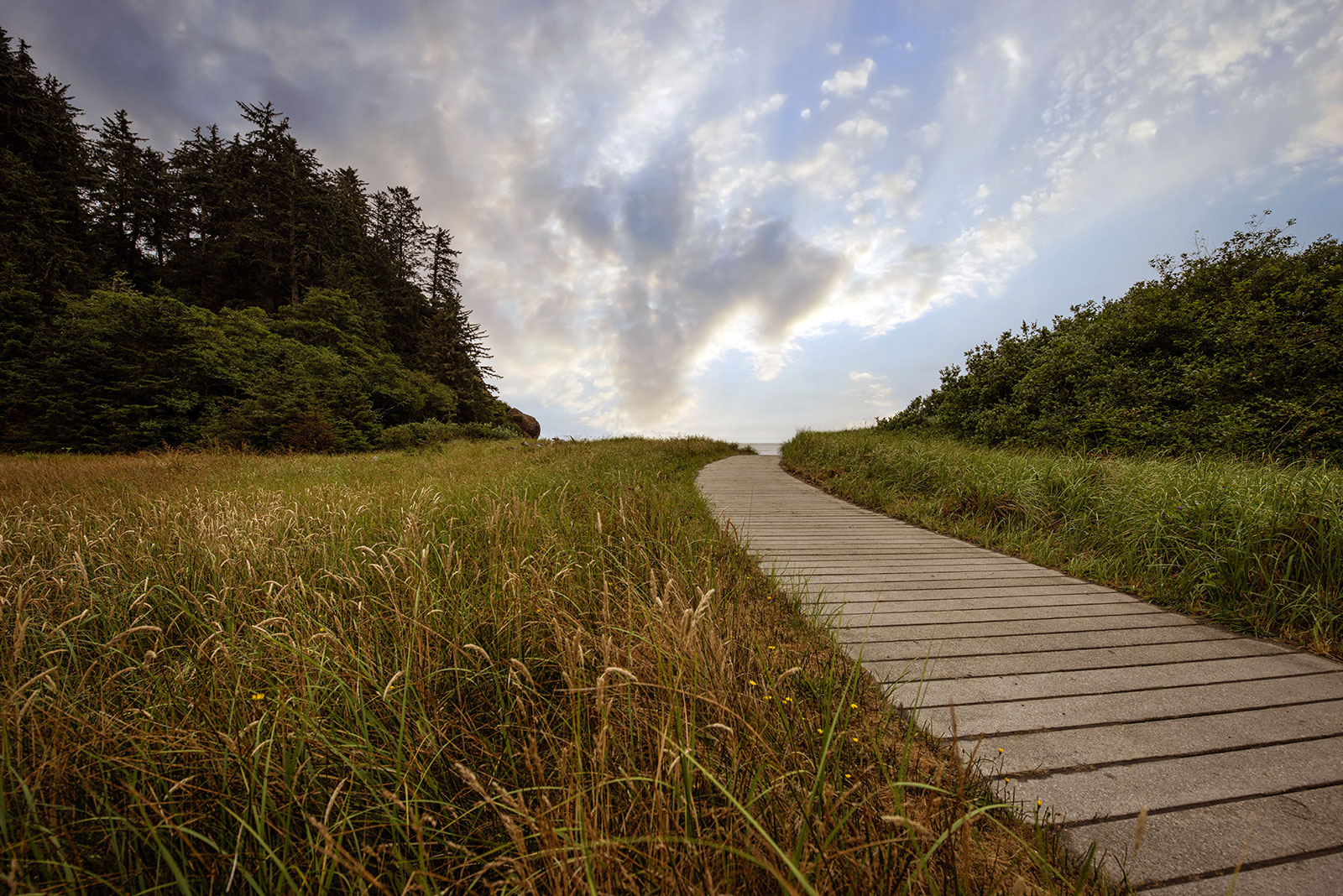
A Confluence of Peregrinations and Prayers
At Cape Disappointment near the mouth of the Columbia River, Maya Lin’s walkway and boardwalk present juxtaposing journeys of discovery.
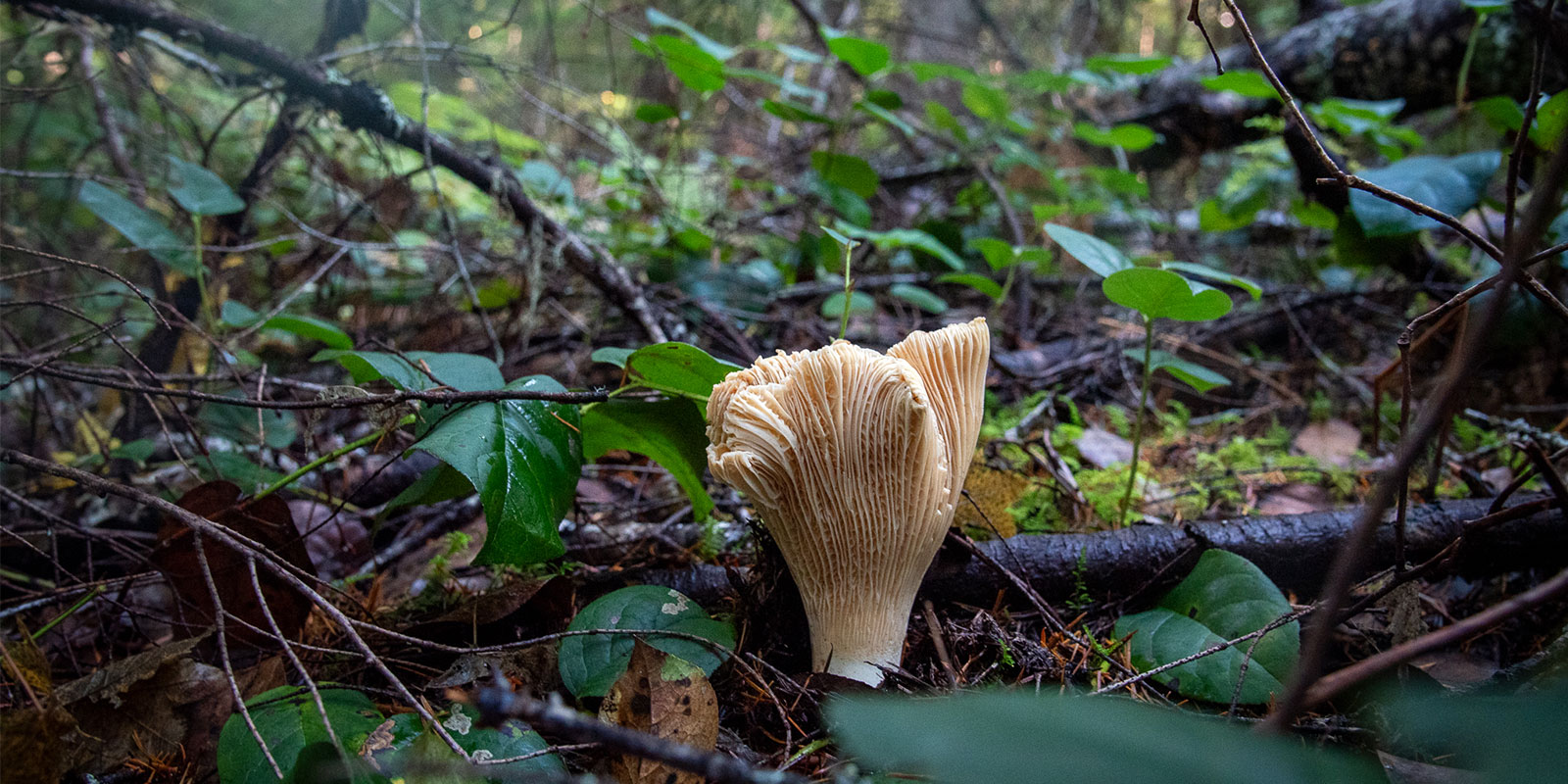
Mushroom foraging with a guide taught me something about chanterelles—and myself.
BY LAURA J. COLE | November 22, 2023
I meander. I always have.
It’s particularly helpful in noticing everything from wildflowers to wildlife while wandering in the forest—and in my newfound pastime: foraging for mushrooms.
But I didn’t know that when I was considering participating in my first guided foraging experience. Instead, I worried: Will I be able to keep up? Will I look like I don’t belong? Will I make a fool of myself?
I first wanted to go mushroom foraging in the fall of 2004 while reading Olga Tokarczuk’s House of Day, House of Night. It was for a class on Eastern European literature I took my first semester of graduate school in Florida. The book is about a woman moving to a new town, where among other things, she forages for mushrooms, such as velvet foot that grow in the winter, orange birch boletus that grow in summer, and puffballs that she fries in butter and sprinkles with sugar.
“The first year I found the number of mushrooms in the local forest intimidating,” she wrote. “I brought home whole basketfuls, spread them out on newspapers and inspected my collection for as long as I could, until the moment came when I had to take a knife and cut up their soft, childish bodies, chop off their caps and spike them on blackthorn spines to dry out.”
I worried: Will I be able to keep up? Will I look like I don’t belong? Will I make a fool of myself?
Back then, I wanted simply to spend time scanning a forest floor that looked different than the Florida wetlands that surrounded me. I remember searching online for opportunities and the closest option was in the Blue Ridge Mountains of North Carolina. Through the CouchSurfing website, I found a man—white, whose age I cannot recall—who offered to take people foraging. I considered going but thought better of hiking alone in the woods with a man I’d never met. Instead, I let the desire lie dormant, though every so often it would sprout back up.
I decided when I moved to PNW last fall that this was my perfect chance, but knowing little about which mushrooms are safe, which will kill you, and which will take you on a journey to a cosmic plane, I decided to find a knowledgeable guide. I messaged Angela Shen at Savor the Wild Tours, based in Seattle, writing that I am not in the best of shape, expressing my fear, and asking if I would pose a problem. The last thing I wanted to do was slow others down.
Shen responded: “We always group folks together in like fitness and speed level as much as we can. And you can take your time. Don’t stress! But there is a fair amount of spelunking around and over big, downed logs, and some fairly steep inclines. It is definitely a workout!”
Climbing over logs and navigating a forest dense with saplings and low branches was indeed a workout, but not an impossible or unmanageable one. My size wasn’t a hindrance, which isn’t to say it was an advantage. For example, early on in the foraging experience in Gifford Pinchot National Forest, Angela called out that she had found a matsutake, which can cost up to $1,000 a pound, and for us to come see. I considered how far away her voice was, then decided to stick to the chanterelle, lobster, and coral mushrooms I came for.
So much of the day was spent looking down at the lichen and fallen leaves and saplings, searching for navigable courses taking me from where I was to where I wanted to go that I rarely looked up. Sometimes, other foragers were around me. Sometimes, not. (That’s when I knew to yoo-hoo to the others and get moving.)
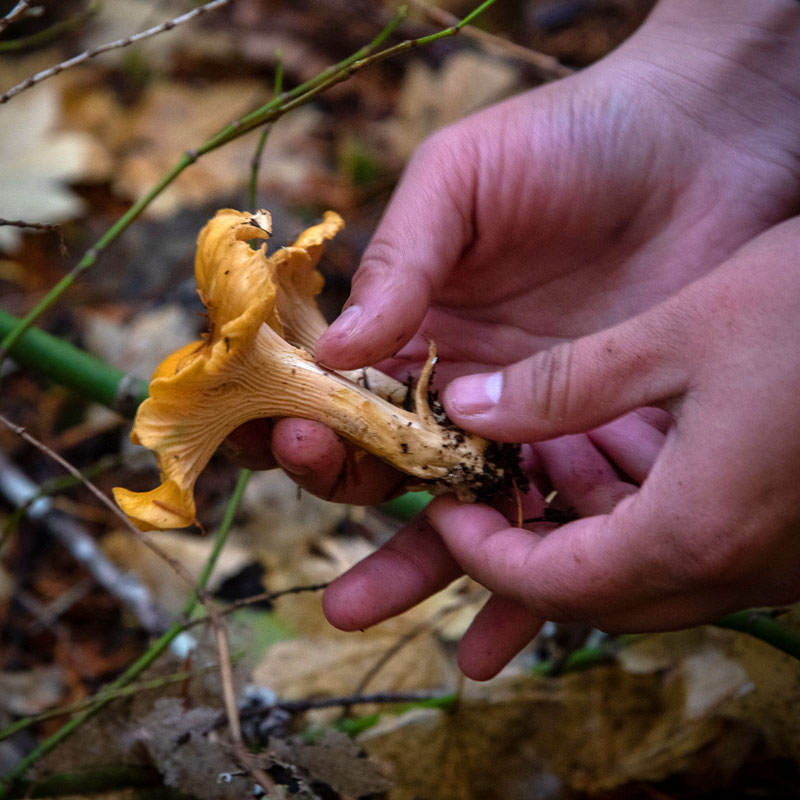
ChanterelleS
Latin name: Cantharellus (its scientific name is derived from the Greek ‘kantharos’, meaning tankard or cup in a reference to their shape)
Benefits: High in vitamins C and D and potassium, and said to improve liver function, reduce cholesterol levels, treat thrombosis, and fight cancer-causing agents
Fun fact: Only five states (California, Minnesota, Oregon, Texas, and Utah) have official state mushrooms and two are chanterelles. The Pacific golden chanterelle (Cantharellus formosus) is the official state mushroom of Oregon, and the California golden chanterelle (Cantharellus californicus) is the state mushroom of California.
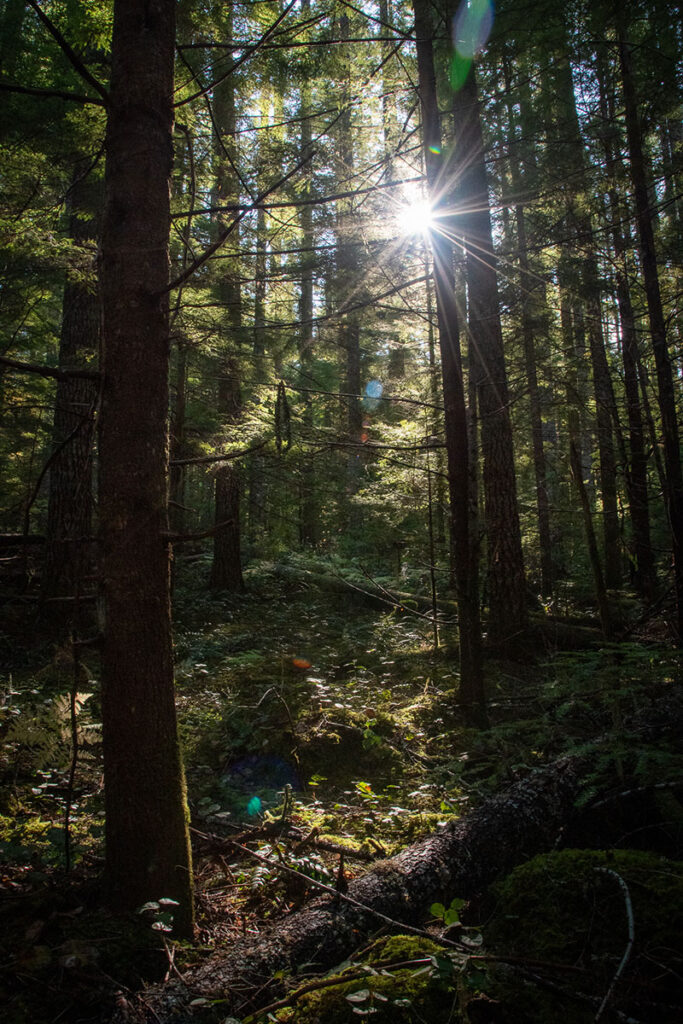
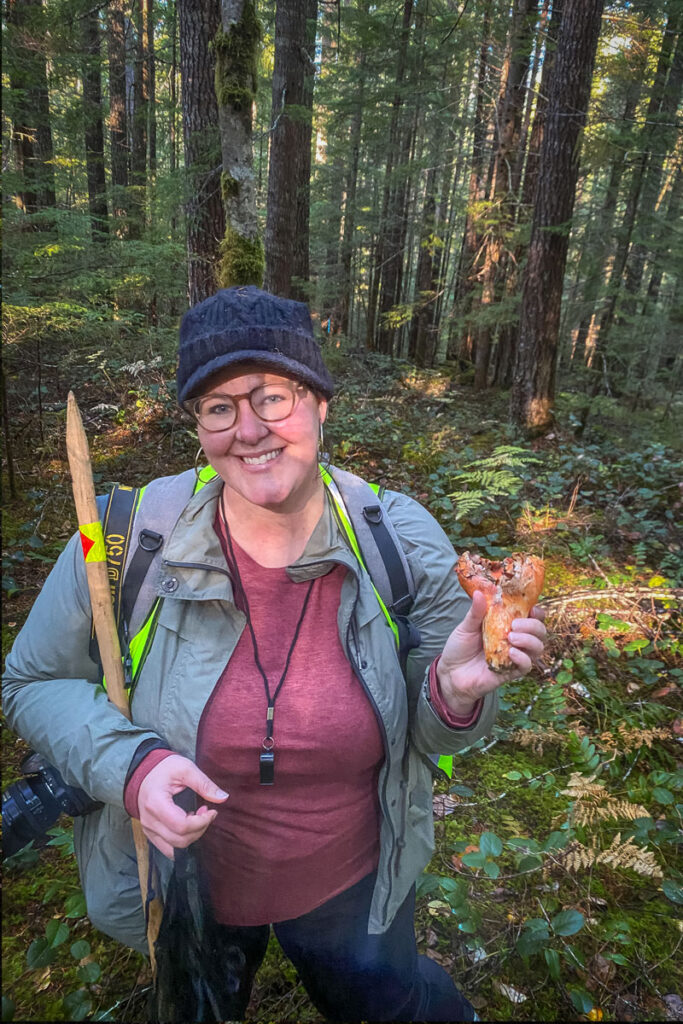
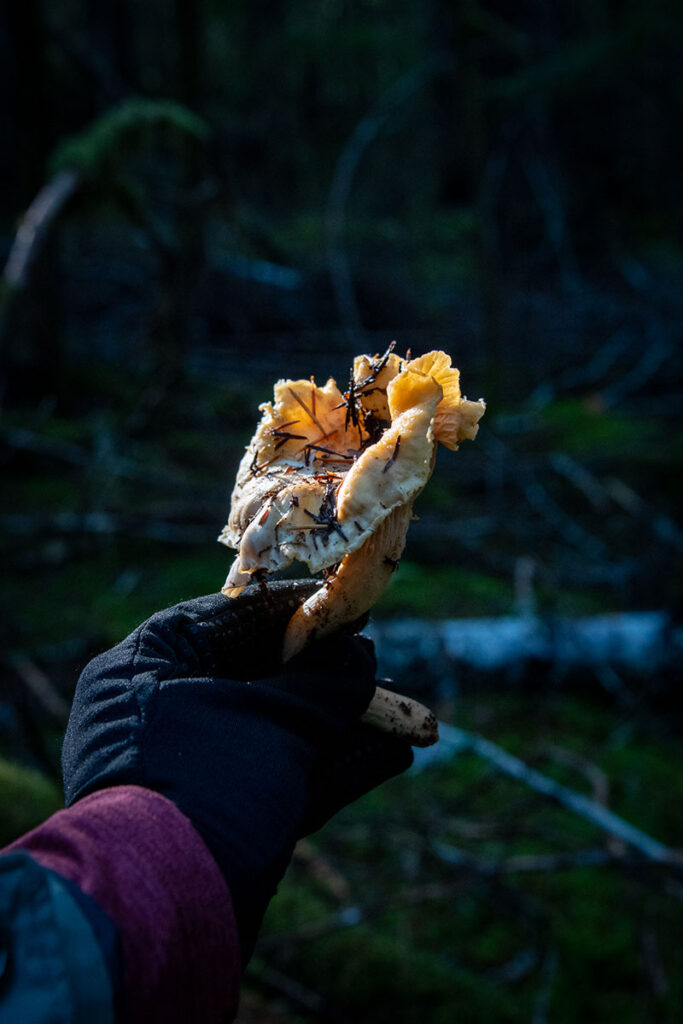
But I never once felt like I didn’t belong, which was the deeper fear underlying my concern about not being able to keep up. And for most of my life my weight has consciously and subconsciously been at the center of every consideration of whether I belong or not. There are several memories of feeling like an outcast because of it: Being locked in a basement as a child by friends and told to use my fat ass to break through the door. Having a coworker order team shirts in every size but mine because he didn’t think clothing should be available in that size. Being told “you can do this, sweetie,” by a Southern woman, as we passed each other on a trail in Arches National Park that I was finishing, and she was just beginning.
For many years, I stopped swimming—an activity I loved so much that I would swim even when the water was cold enough that it turned my lips purple and made my teeth chatter—because I no longer wanted to see the looks of disgust, hate, or disappointment from everyone from family to strangers when I wore a bathing suit.
Part of my personal healing the past few years has been about doing things that take me beyond my comfort zone, from swimming in public to joining foraging groups—things that I know sound trivial to many people. Part of the appeal of moving to the Pacific Northwest was writers like Lindy West and stores like Fat Fancy (which has since closed) that claimed space for and welcomed fat bodies like mine, even if they, like every inclusive effort, are imperfect and incomplete.
And when Shen greeted me on arrival with a big hug, told me she was glad I had come, and welcomed me to the group, I felt completely at ease.
As with people in society, in the forest, there is a cornucopia of mushrooms. They come in every hue and represent a variety of sizes and shapes. Some, like velvet foot, are long and lanky. Others, like Pacific golden chanterelles can grow to be quite tall and thick. And some, like puffballs, have no stems at all.
All those anxieties that have built up over a lifetime were replaced by the excitement of finally doing something I waited too damn long to try.
But they all contribute to the overall health of the forest. Mycorrhizal fungi such as chanterelles and boletes have a symbiotic relationship with their host plant, increasing the water and nutrients the plant receives in exchange for carbon. Saprotrophic fungi such as puffballs and morels recycle carbon, minerals, and nutrients from decomposing matter such as fallen leaves, trees, and bark, and convert it into nutrients for other plants. And parasitic fungi such as lobster and lion’s mane balance the overall ecosystem by reducing and eliminating dominant plant species, thus making room for others.
In writing of the mushrooms she has come to love, the narrator in House of Day, House of Night mentions amanitas, which most foragers avoid. “They divide mushrooms into poisonous and edible, and the guidebooks discuss the features that allow you to tell the difference—as if there are good mushrooms and bad mushrooms. No mushroom book separates them into beautiful and ugly, fragrant and stinking, nice to touch and nasty, or those that induce sin and those that absolve it. People see what they want to see, and in the end they get what they want—clear, false divisions. Meanwhile, in the world of mushrooms, nothing is certain.”
It is true. People will still see what they want to. Age, more than youth, has allowed me to accept if not embrace the things I have long viewed as shameful, unlovable, and disappointing in myself.
But I am learning to push through that slowly decaying layer and make room for myself—and the things I’ve waited too damn long to try.
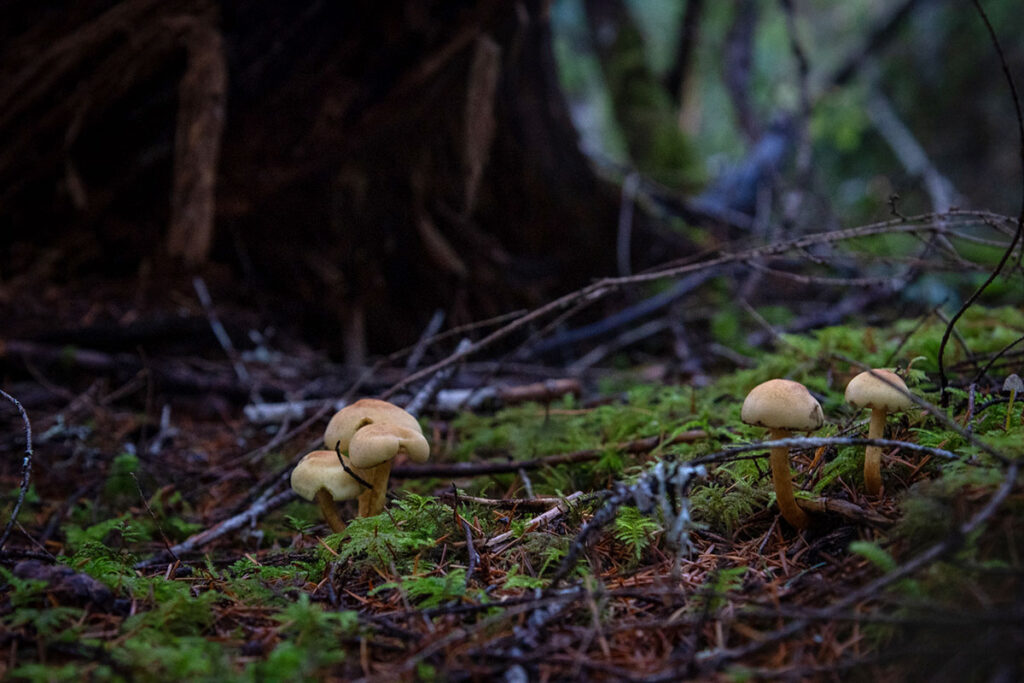

ChanterelleS
Latin name: Cantharellus (its scientific name is derived from the Greek ‘kantharos’, meaning tankard or cup in a reference to their shape)
Benefits: High in vitamins C and D and potassium, and said to improve liver function, reduce cholesterol levels, treat thrombosis, and fight cancer-causing agents
Fun fact: Only five states (California, Minnesota, Oregon, Texas, and Utah) have official state mushrooms and two are chanterelles. The Pacific golden chanterelle (Cantharellus formosus) is the official state mushroom of Oregon, and the California golden chanterelle (Cantharellus californicus) is the state mushroom of California.
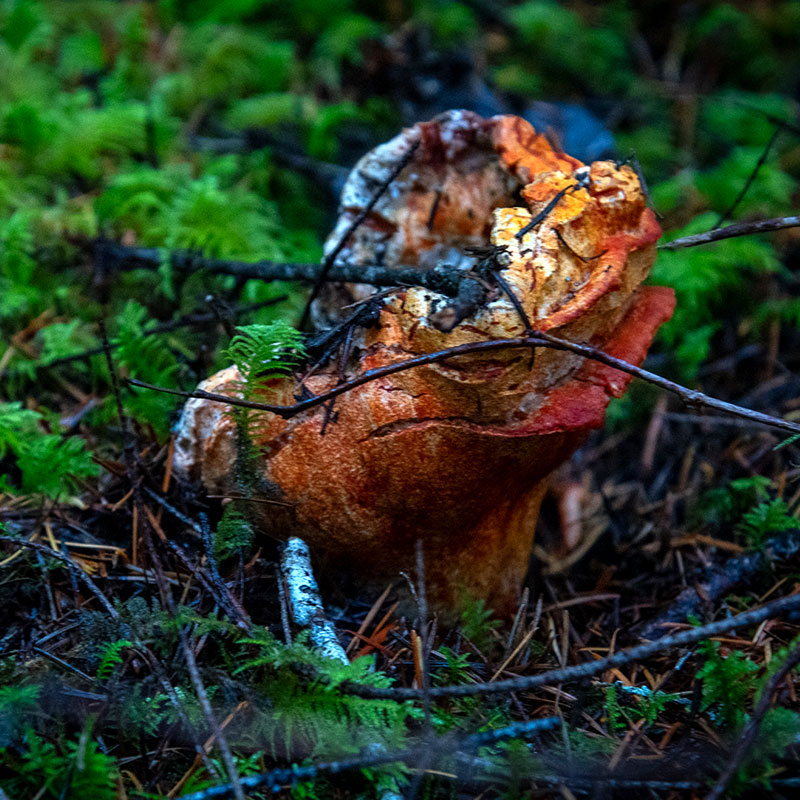
LobsterS
Latin name: Hypomyces lactifluorum
Benefits: According to Foraged.com, they “contain beta-glucans, which have been shown to support the immune system and improve gut health.”
Fun fact: Lobster mushrooms are typically Russula brevipes that have been infected with a microparasite that turns their skin coarse and orange or red when at their peak and purple as they age. Because they require a microparasite, they are not cultivated and can only be found growing in the wild.


At Cape Disappointment near the mouth of the Columbia River, Maya Lin’s walkway and boardwalk present juxtaposing journeys of discovery.
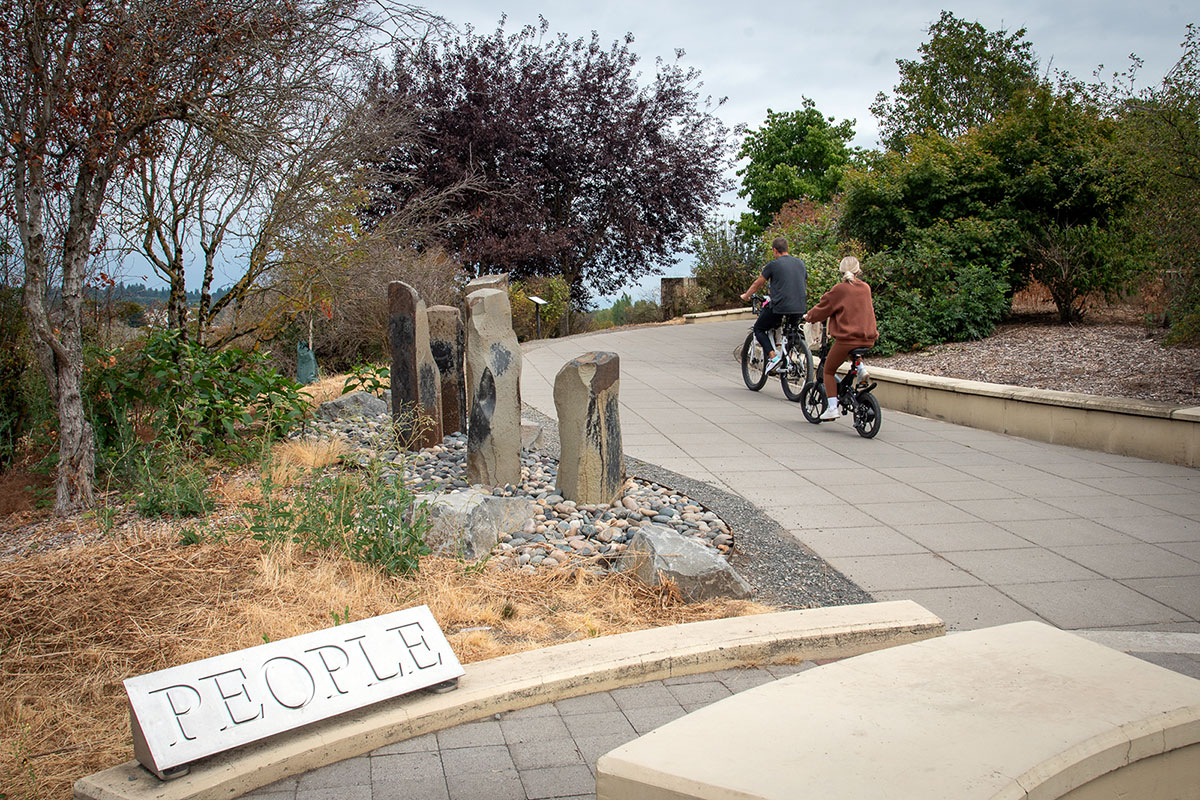
Located near the confluence of the Willamette and Columbia rivers, the Vancouver Land Bridge merges rivers, land, people, and trade.

